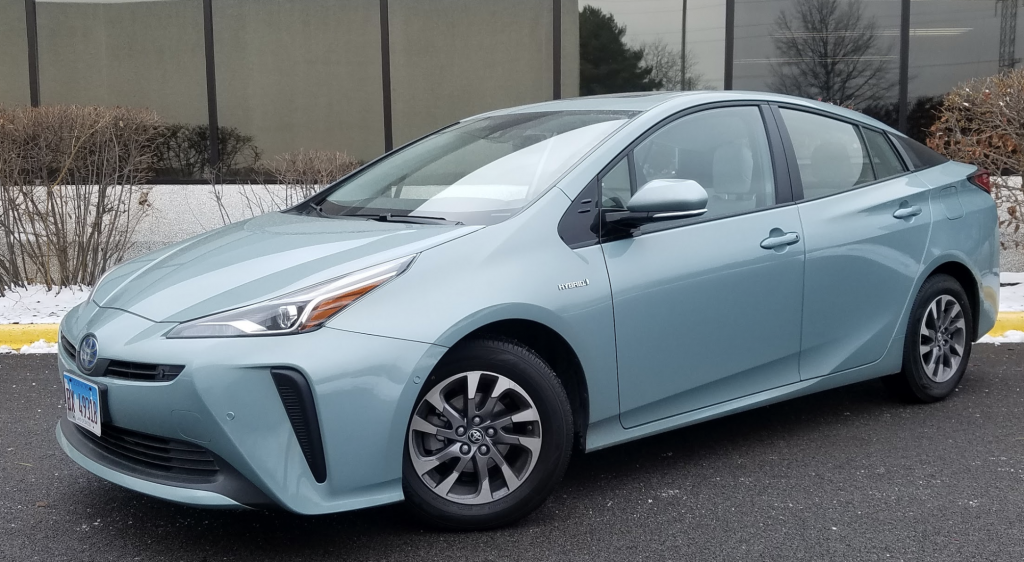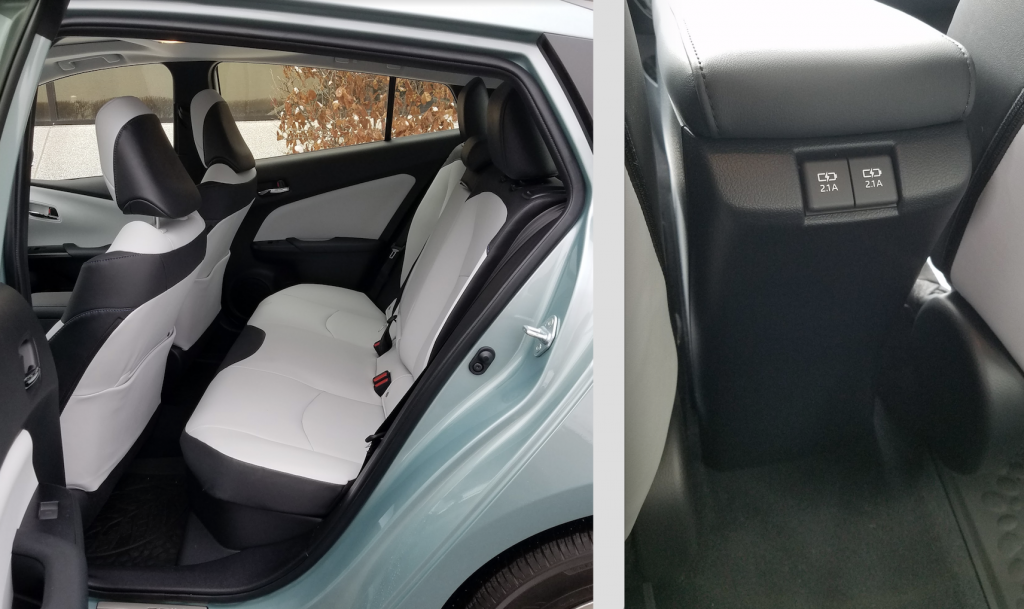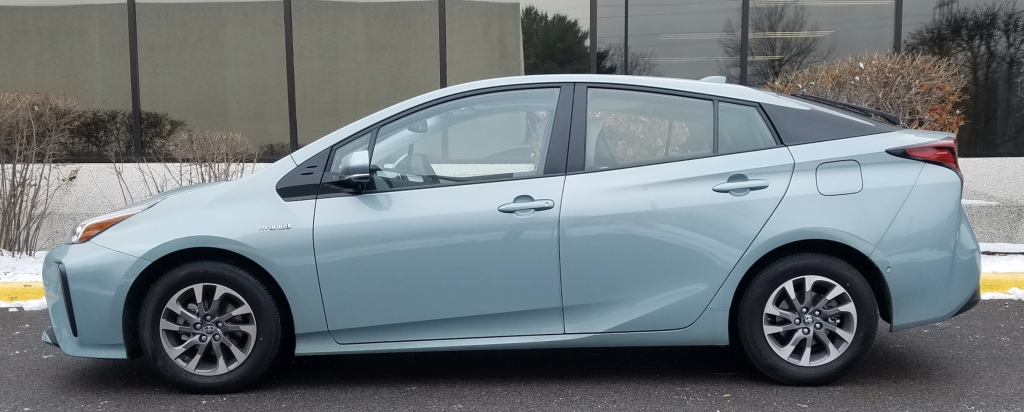
 2020 Toyota Prius Limited
2020 Toyota Prius Limited
Class: Compact Car
Miles driven: 1195
Fuel used: 26.4 gallons
| CG Report Card | |
|---|---|
| Room and Comfort | B- |
| Power and Performance | C+ |
| Fit and Finish | B+ |
| Fuel Economy | A |
| Value | A- |
| Report-card grades are derived from a consensus of test-driver evaluations. All grades are versus other vehicles in the same class. Value grade is for specific trim level evaluated, and may not reflect Consumer Guide's impressions of the entire model lineup. | |
| Big & Tall Comfort | |
| Big Guy | B- |
| Tall Guy | B |
| Big & Tall comfort ratings are for front seats only. "Big" rating based on male tester weighing approximately 350 pounds, "Tall" rating based on 6'6"-tall male tester. | |
| Drivetrain | |
| Engine Specs | 121-hp 1.8-liter |
| Engine Type | 4-cylinder hybrid |
| Transmission | CVT automatic |
| Drive Wheels | front |
Real-world fuel economy: 45.3
Driving mix: 25% city, 75% highway
EPA-estimated fuel economy: 54/50/52 (city, highway, combined)
Fuel type: Regular gas
Base price: $32,375 (not including $955 destination charge)
Options on test vehicle: Premium Convenience Package ($515), four-season floor mat package ($428), illuminated door sills ($299), door edge guards ($125), rear bumper applique ($69)
Price as tested: $34,768
Quick Hits
The great: Fuel economy
The good: Around-town throttle response, ride quality, cargo space and versatility
The not so good: Control layout, limited highway-speed merging and passing power
More Prius price and availability information
Rick Cotta
Toyota’s Prius is one of the original modern hybrids and long one of the best-selling. And though hybrids in general have lost the “green” spotlight to full electric vehicles of late, the Prius remains one of the most comfortable and practical fuel-misers on the road.

This one, however, didn’t prove to be quite as miserly as previous examples. We averaged “just” 45.3 mpg, the only Prius in recent memory not to break 50 mpg. Much of that was due to cold-weather driving and a very long highway trip that perhaps was covered at somewhat more than highway speeds (and the Prius gets better mileage in the city than on the highway), but none of our drivers managed to match the EPA figures … and we usually beat them.
This test car also exhibited another slight demerit.
Quick Spin: Hyundai Ioniq Hybrid

The line-topping Limited we tested comes with a large, vertically oriented 11.6-inch touchscreen and piano-black trim, both no doubt intended as “premium” features. But both reflected a lot of glare in certain light, and the touchscreen did away with volume and tuning knobs. In their place were repetitive-step flippers — which aren’t as convenient — though some redundant controls on the steering wheel helped. Climate controls were incorporated into the screen, which likewise made us miss more-convenient manual controls. The screen itself is split into top and bottom halves, the top hosting the navigation map and controls, the bottom the audio and climate controls. Overall, the more conventional controls found on the mid-level XLE AWD-e we tested last year were more to our liking.

But the Limited also includes some rather neat features some other Prius trim levels lack. Besides the aforementioned navigation system — which includes a premium JBL audio system — the Limited comes standard with a head-up display and adaptive headlights (they turn with the front wheels to illuminate around corners), though both are optional on the XLE. Also standard on the Limited are a fairly complete complement of comfort, convenience, and safety features, including rear obstacle detection, Park Assist, rain-sensing wipers, heated front seats and steering wheel, power driver seat with lumbar adjustment, keyless access and starting, and Qi wireless phone charger. Optional on our tester was the $515 Premium and Convenience Package with a power sunroof and 15-inch alloy wheels that replace 17s; yes, smaller-diameter wheels with taller-sidewall tires that likely contributed to the unusually comfortable ride. Oddly, while Apple CarPlay compatibility is standard on all models, Android Auto is not available.
Visibility is fairly good all around. However, a horizontal bar dividing the rear window can block a following car’s headlights (good) and also its turn signals (bad, as you might not realize it’s about to pull out and pass you). Passenger room is about par for the compact-car course, though rear-seat headroom is only adequate for those up to about 5’11, and legroom gets tight if a front seat is moved far back.
Test Drive: 2019 Honda Insight Touring

One of the Prius’s strengths has always been its hatchback body style and the cargo space it affords. On our test car, folded rear seat backs rested about two inches above the level of the cargo floor with limited space beneath the floor, though there is a holding slot for the cargo cover; in the XLE AWD-e tested earlier, the seat backs were level with the floor because the floor itself was higher, though that decreases available cargo height.
While we’ve found other versions more to our liking, the Limited still has a lot going for it as sort of a techy, luxury hybrid. And even though the Prius is no longer miles ahead of other hybrids, it’s still a competitive entry with an established history behind it.
Test Drive: 2020 Toyota Corolla Hybrid

Check out our Compact Car Best Buys
2020 Toyota Prius



